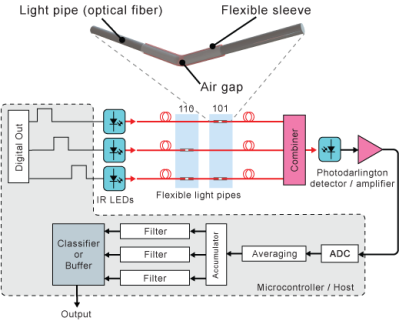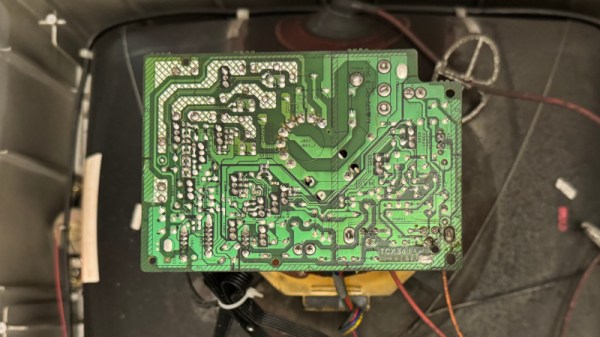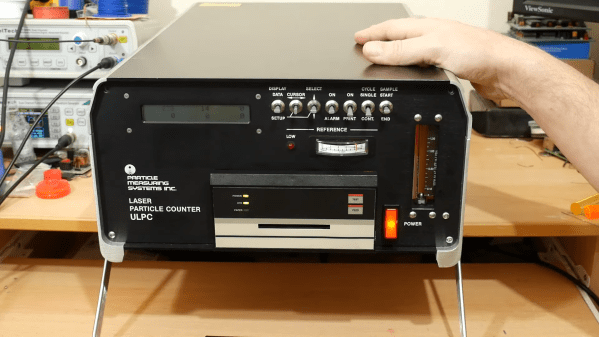Older consumer electronic devices follow a desirability curve in which after they fall from favour they can’t be given away. But as they become rarer, they reach a point at which everyone wants them. Then, they can’t be had for love nor money. CRT TVs are now in the first stage, they’re bulky and lower-definition than modern sets, and thus thrift stores and dumpsters still have them in reasonable numbers. To retrogamers and other enthusiasts, this can be a bonanza, and when he saw a high-end late-model JVC on the sidewalk [Chris Person] wasted no time in snapping it up. It worked, but there were a few picture issues, so he set about fixing it.
Delays And Timers In LTSpice (no 555)
If you need a precise time, you could use a microcontroller. Of course, then all your friends will say “Could have done that with a 555!” But the 555 isn’t magic — it uses a capacitor and a comparator in different configurations to work. Want to understand what’s going on inside? [Mano Arrostita] has a video about simulating delay and timer circuits in LTSpice.
The video isn’t specifically about the 555, but it does show how the basic circuits inside a timer chip work. The idea is simple: a capacitor will charge through a resistor with an exponential curve. If you prefer, you can charge with a constant current source and get a nice linear charge.
You can watch the voltage as the capacitor charges and when it reaches a certain point, you know a certain amount of time has passed. The discharge works the same way, of course.
We like examining circuits for learning with a simulator, either LTSpice or something like Falstad. It is easier than breadboarding and encourages making changes that would be more difficult on a real breadboard. If you want a refresher on LTSpice or current sources, you can kill two birds with one stone.
A Bend Sensor Developed With 3D Printer Filament
PhD students spend their time pursuing whatever general paths their supervisor has given them, and if they are lucky, it yields enough solid data to finally write a thesis without tearing their hair out. Sometimes along the way they result in discoveries with immediate application outside academia, and so it was for [Paul Bupe Jr.], whose work resulted in a rather elegant and simple bend sensor.
 The original research came when shining light along flexible media, including a piece of transparent 3D printer filament. He noticed that when the filament was bent at a point that it was covered by a piece of electrical tape there was a reduction in transmission, and from this he was able to repeat the effect with a piece of pipe over a narrow air gap in the medium.
The original research came when shining light along flexible media, including a piece of transparent 3D printer filament. He noticed that when the filament was bent at a point that it was covered by a piece of electrical tape there was a reduction in transmission, and from this he was able to repeat the effect with a piece of pipe over a narrow air gap in the medium.
Putting these at regular intervals and measuring the transmission for light sent along it, he could then detect a bend. Take three filaments with the air-gap-pipe sensors spaced to form a Gray code, and he could digitally read the location.
He appears to be developing this discovery into a product. We’re not sure which is likely to be more stress, writing up his thesis, or surviving a small start-up, so we wish him luck.
Vintage Particle Counter Is A Treasure Trove Of Classic Parts
If you need a demonstration of just how far technology has come in the last 40 years, just take a look at this teardown of a 1987 laser particle counter.
Granted, the laser-powered instrument that [Les Wright] scored off of eBay wasn’t exactly aimed at consumers. Rather, this was more likely an instrument installed in cleanrooms to make sure the particulate counts didn’t come out of range. As such, it was built like a battleship in a huge case stuffed with card after card of electronics, along with the attendant pumps and filters needed to draw in samples. But still, the fact that we can put essentially the same functionality into a device that easily fits in the palm of your hand is pretty striking.
[Les] clearly bought this instrument to harvest parts from it, and there’s a ton of other goodness inside, including multiple copies of pretty much every chip from the Z80 family. The analog section has some beautiful Teledyne TP1321 op-amps in TO-99 cans. Everything is in immaculate condition, and obsolete or not, this is an enviable haul of vintage parts, especially the helium-neon laser at its heart, which still works. [Les] promises an in-depth look at that in a follow-up video, but for now, he treats us to a little tour of the optics used to measure particulates by the amount of laser light that’s scattered.
All things considered, [Les] really made out well on this find — much better than his last purchase.
Continue reading “Vintage Particle Counter Is A Treasure Trove Of Classic Parts”
Hackaday Europe 2024 Is Live
Hackaday Europe 2024 is on! We’re all here in Berlin, and the talks are about to begin.
If you’re not, you can join us in spirit on our livestream! And if you’re following along, drop comments here.
Rabbit Sighted In The Wild
Here at Hackaday we’re suckers for old abandoned technologies, the more obscure the better. The history of the telephone has plenty to capture our attention, and it’s from that arena that something recently floated past our timeline. [IanVisits] reports a sighting of a Rabbit in a London Underground station. The bunny in question definitely isn’t hopping though, it’s been dead for more than three decades. It’s a base station for a failed digital mobile phone system.
We’ve had a look in the past at CT2, the system this Rabbit base station once formed part of. It was an attempt to make an inexpensive phone system by having the handsets work with fixed base stations rather than move from cell to cell. It was one of the first public digital mobile phone systems, but the convenience of a phone that could both receive calls and make them anywhere without having to find a base station meant that GSM phones took their market.
The one in Seven Sisters tube station is a bit grubby looking, but it’s not the only survivor out there in the field. We have to admit to being curious as to whether it’s still powered on even though its backhaul will be disconnected, as in our experience it’s not uncommon for old infrastructure to be left plugged into the wall for decades, unheeded. Does anyone fancy sniffing for it with a Flipper Zero?
No Lathe? Build Your Own
If you need to make round things, you probably need a lathe. Can you build one as nice as one you can buy? Probably not. But can you build one that will work and allow you to do more things than having no lathe at all? [Mikeandmertle] say absolutely! You can see the contraption in operation in the video below.
The build is decidedly functional-looking and only requires a few parts. Most of the components are unremarkable, save for a threaded bar, a metal pipe, some bearings, and a few threaded inserts. Well, there’s also a drill chuck and two lathe centers. Those don’t have to be very expensive, but they may well be the bulk of what you have to spend to make this project.
















